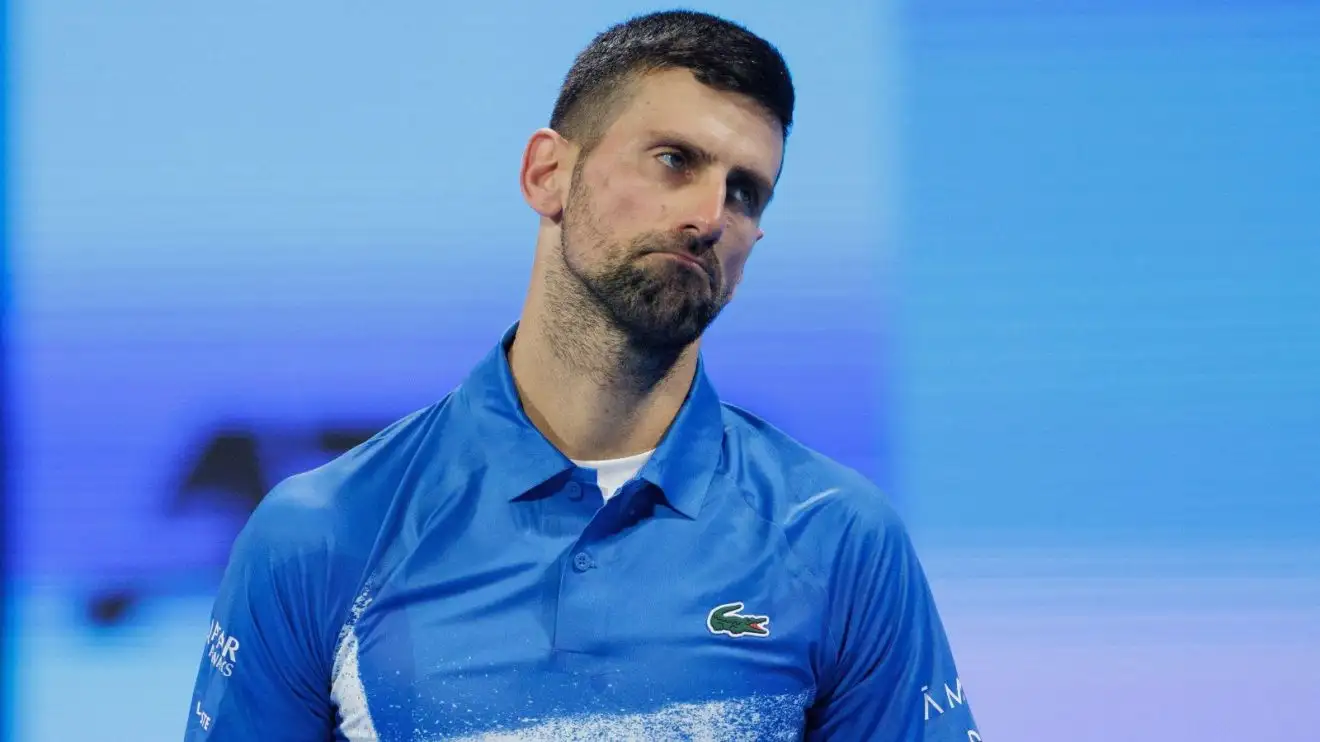
As the clay courts of Monte Carlo fade into memory, Novak Djokovic finds himself at the center of a tennis tempest. The 24-time Grand Slam champion, long a beacon of consistency, has sparked debate with a noticeable shift in his approach during the 2025 season. Known for his methodical, defense-to-offense mastery, Djokovic’s recent performances—culminating in a shock third-round exit at the Monte Carlo Masters—suggest he’s tinkering with something bold. But does this reinvention signal a problem for the Serbian legend, or is it a calculated gamble to extend his reign? At 37, Djokovic’s every move is scrutinized, and the tennis world is abuzz with questions about his future.
Djokovic’s Monte Carlo campaign ended abruptly against Francisco Cerundolo, a 7-5, 6-4 loss that marked his earliest exit there in a decade. The defeat wasn’t just a blip; it exposed a player experimenting with aggression, trading his trademark patience for riskier, point-ending shots. “I’m trying to find a new way to stay competitive,” Djokovic admitted post-match, his words hinting at a deliberate pivot. Gone were the endless rallies that wore opponents down; instead, he leaned into early forehands and net approaches, a style that felt foreign to fans accustomed to his elastic defense. The result? A mix of brilliance and errors, with 20 unforced mistakes against Cerundolo underscoring the growing pains.
This shift comes after a 2025 season that’s been solid but not spectacular. Djokovic reached the Australian Open semifinals, falling to Jannik Sinner, and made the Indian Wells quarters before Carlos Alcaraz sent him packing. His 12-3 record pales against his own lofty standards—no titles, no finals, and a world No. 1 ranking under threat from Sinner’s relentless surge. Former rival Gilles Simon recently noted Djokovic’s adaptability, calling it “logical” for a veteran chasing longevity. “He’s not playing like he did at 25, but he’s finding ways to win,” Simon observed, suggesting the Serb is tweaking his game to preserve energy and counter younger foes. Yet, Monte Carlo told a different story: a Djokovic caught between styles, neither fully committed to attack nor anchored in defense.
The numbers paint a complex picture. Against Cerundolo, Djokovic hit 28 winners—high for a straight-sets loss—but his first-serve percentage dipped to 58%, a far cry from his usual metronomic serving. His net points won (12 of 18) showed promise, but break-point conversions (1 of 7) betrayed a lack of clutch precision. “It’s a process,” Djokovic said, brushing off concerns. “I’m not worried, but I know I need to adjust.” His words carry weight, given his history of defying doubters—think 2023, when he won three Slams at 36. But clay, with its grinding rallies and unforgiving margins, exposes flaws, and Djokovic’s experiment felt rushed against a confident Cerundolo, who’s quietly climbed to No. 21.
Context matters. Djokovic’s off-court life—endorsement deals, coaching changes, and vocal stances on issues like Jannik Sinner’s doping case—has kept him in headlines, potentially sapping focus. His decision to part ways with longtime coach Goran Ivanisevic before Monte Carlo raised eyebrows, with Nenad Zimonjic stepping in temporarily. “I’m still finding the right balance with the team,” he confessed, hinting at the upheaval behind his on-court search for form. Add the physical toll of nearly two decades at the top, and it’s clear Djokovic is navigating uncharted waters, even for a player with 98 ATP titles.
The tennis landscape isn’t helping. Sinner, 23, and Alcaraz, 21, are no longer prodigies but proven champions, with eight Slams between them. Alexander Zverev and Stefanos Tsitsipas, perennial threats, loom as clay-season spoilers. Djokovic’s shift to aggression seems tailored to disrupt their rhythm, but it risks alienating the strengths—mental steel, court coverage—that made him untouchable. His next stop, the Barcelona Open, offers a chance to refine this approach against a field including Alcaraz and Casper Ruud. A deep run could silence skeptics; another early exit might amplify talk of a “problem.”
Fans remain divided. Some see a genius reinventing himself, others a legend forcing a square peg into a round hole. “I believe in my ability to adapt,” Djokovic insisted, his defiance a reminder of the fire that’s fueled 430 weeks at No. 1. History favors him—few have bet against him and won. But as the clay swings toward Roland Garros, where he’s a three-time champion, the clock ticks louder. Is Djokovic’s radical shift a masterstroke or a misstep? Barcelona awaits, and with it, the next chapter in a saga that’s anything but settled.
Leave a Reply